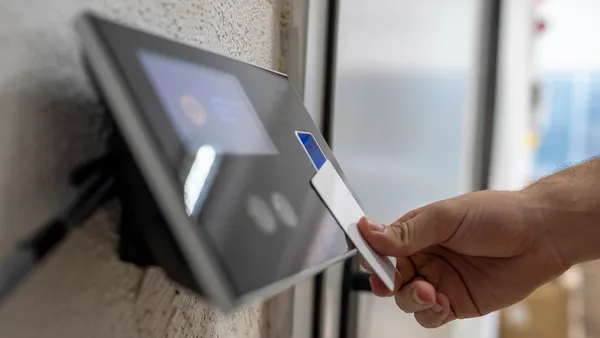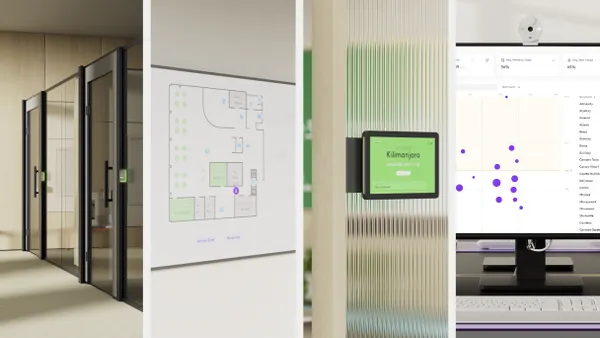Dive Brief:
- Current AI capabilities, such as image recognition, data modeling and text generation, can potentially optimize an estimated 65% of sustainable asset improvement-related tasks, according to a November 2024 report by JLL.
- By leveraging AI-powered technology, building owners and operators can take a more informed, data-driven approach to their overall asset enhancement and energy retrofit strategy, adding the most value in four key areas of the asset enhancement process — portfolio prioritization, building energy audit and modeling, construction management and stakeholder data sharing, JLL says.
- Building owners must take proactive steps for AI integration by defining AI objectives and priorities, assessing organizational readiness, analyzing providers and evaluating the best approach to harvest capabilities, whether by purchase, build or partnerships, according to the report.
Dive Insight:
Light to medium retrofits can unlock between 10% and 40% in energy savings, or $0.49 to $1.94 per square foot of savings on average, according to JLL research published in September. These actions, however, are not being implemented at the scale required to meet decarbonization targets, JLL says. To meet targets and achieve net-zero emissions by 2050, and combat the deterioration of building components and equipment, the retrofit rates would need to triple, according to JLL estimates.
The disconnect between potential operational savings and actual retrofit progress has been driven in part by the capital-intensive nature of some improvement projects, complexity in decision-making and inadequacy of data and tools, according to JLL’s sustainable asset enhancement report. AI can help to alleviate these concerns, with current technologies able to increase speed and accuracy, streamline processes and allow for better data management and retention, JLL says.
For example, Generative AI technologies can help users upload documents, summarize them and identify patterns, reducing the time it takes to complete some tasks by 20% to 30%, Dipin Kasana, director of business analytics at JLL, said at a seminar on facilities management AI implementation at the IFMA World Workplace conference in October. “Whatever time you can save has a direct impact on how you operate, without having to really impact your day-to-day job,” Kasana said.
One of the most critical ways that AI can assist operators with retrofits is by improving portfolio prioritization. AI-driven technology functions enable operators to extract and integrate information about trigger events, like equipment replacement cycles and lease expiration dates, to identify optimal timing for retrofits, the report says. AI can also simulate various decarbonization scenarios to predict energy consumption patterns and financial outcomes, consolidating budget-related spreadsheets and using external data to predict cost implications, JLL says.
The technology can also automate traditionally manual tasks, like document review, data collection, building inspections, energy modeling and audit reporting, to reduce time spent on these tasks and increase data accuracy, JLL says.
AI can further streamline project execution through design and simulation, construction scheduling, procurement planning and construction site monitoring, JLL says. The technology provides the ability to extract key information from documents, emails and meetings and disseminate information to stakeholders via chat-based interfaces, per the report.
But using AI-powered technology is just one step and adoption requires making sure that tools work well for the frontline workers who actually use them, Nick Haase, co-founder of MaintainX, said in an Aug. 12 blog post. "Without reliable data, your team will see unreliable predictions, leading to inconsistent results and wasted efforts.” Haase said. “To ensure you create a valuable foundation for AI models, you need software that makes data capture easy for your team. With this data, the models can then learn your facility and equipment's ideal and non-ideal operating conditions.”
Using AI to combine siloed building systems data with external information sources has the potential to significantly improve energy use. Researchers have found that using machine learning to optimize air handling units informed by weather and occupancy saved between 5% and 11% of whole-building energy, the U.S General Services Administration said. For bigger, more complex buildings, these savings can be as high as 30%, according to a GSA infographic released in September 2022.
Demand response management systems use AI to reduce peak energy demand, lowering costs and enhancing overall energy efficiency, according to an October IFMA report that details how facilities managers can build a relationship with AI. It can “identify energy-saving opportunities, such as recommending the best times to run energy-intensive equipment or integrating renewable energy sources into the facility’s power grid,” the IFMA report says.












